-
Laboratory of Astrophysics and Cosmology
-
Laborarory of Theory of Integrable Systems
-
Laboratory of Strongly-correlated Low Dimensional SystemsLaboratory of Biophysics of Macromolecules
-
Laboratory of Mathematical Modelling
-
Laborarory of Structure of Atomic Nuclei
Department of Theory of Quantum Processes in Nanosystems
Head of the department - corresponding member of the National Academy of Sciences of Ukraine, Prof., Dr. Elmar G. Petrov.
Research fields
- Theory of energy and charge transport in molecular and biomolecular systems, crystals and nanostructures
- Physical properties of new organic and inorganic materials
- Theory of low-dimensional electronic systems
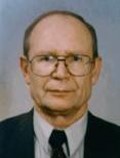
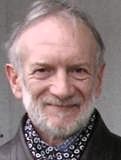


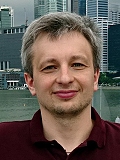
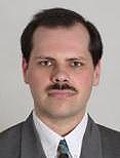
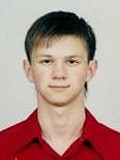
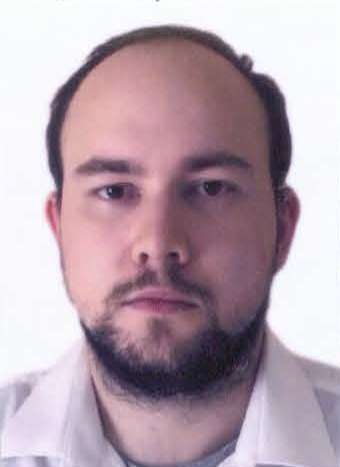
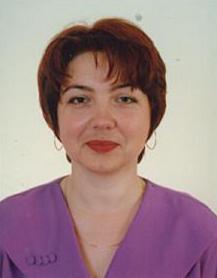
- The dependence of the thermodynamic parameters of a strongly non-equilibrium system on the non-equilibrium indicators in coherently correlated states is given, the dielectric permittivity in the non-equilibrium system and the modes of plasma-acoustic oscillations are estimated. The temperature of the superconducting transition in non-equilibrium conditions is estimated and it is shown that the temperature of the superconducting transition can approach the limiting value corresponding to a quantum with the natural plasma frequency of the medium.S.P. Kruchinin
- The mechanism of kinetic cooperativity of monomeric enzymes was studied. Strict criteria for positive cooperativeness and its sigmoidal version have been established. It is shown that the degree of cooperativity is particularly sensitive to the rates and direction of exchange between the conformational states of the free enzyme. However, no need for "kinetic resonance", declared recently, was found. In general, models with discrete conformational states provide a qualitative understanding of the nature of kinetic cooperativity, but are hardly suitable for the quantitative description of real enzymatic reactions of enzymes, as shown in the case of glucokinase.L.N. Christophorov
- Taking into account the fact that the transitions between the states of the molecular junction are carried out against the background of much faster relaxation processes in the molecular terms and the conduction bands of the electrodes, kinetic equations for integral occupancies of the molecular terms, as well as expressions for the time-dependent electronic current and radiation power of the fluorophore molecule are obtained. It is demonstrated the temporary process of the reorganization of the transmission channels dependently on the magnitude and polarity of the gate voltage as well as an external optical field. The dependence of the overall rates on the elementary rates characterizing the recharge of the molecule, as well as radiation and nonradiative transitions in the molecule, is obtained. Estimates show that in a ZnPc-based transistor, the characteristic transition time is 10-100 ps if the current is in the range of 0.1-10 nA.Corresponding member of NANU E.G. Petrov, Ye.V. Shevchenko
- The influence of poissonian resetting on random walks in a one-dimensional lattice is studied in the most general case, i.e. for any values of the number of nodes, the frequency of jumps between neighbours, as well as for any boundary conditions (terminal sinks) or resetting and starting node placements. The main observables of the process (conditional and unconditional mean first passage/exit times, their coefficients of variation, splitting probabilities) are calculated. The effects of resetting-induced optimization of the anticipated outcome probabilities and corresponding mean times and their fluctuations are described. The crucial role of resetting and starting node placements for these effects is revealed. Possible ways of controlling conformationally splitted multi-step biochemical reactions are indicated.L.N. Christophorov
- The electronic properties of graphene quantum dots have been studied. The electronic spectrum and density of electronic states at the graphene quantum dot were studied using the Dirac-Weyl equation. It is shown that the density of electronic states is similar to the Bohr atomic orbitals and is in good agreement with the experiment.S.P. Kruchinin
- The methods of nonequilibrium statistical mechanics have been used to obtain the coarse-grained kinetic equations that enable description of the time behavior of slow processes occurring against the background of faster ones. Vibrational relaxation in electronic terms and stochastic deviations of the position of the electronic energy levels of the system from their stationary positions are considered as the most important fast processes. As an example, the kinetics of one- and two-electron transfer along protein chains, oxygen-mediated transmission of triplet excitation in a pigment-protein complex, kinetics of temperature-independent desensitization of pain receptors, as well as conformational regulation of enzymatic reactions are described.L.N. Christophorov, V.I. Teslenko, Cor.-member of the NAS of Ukraine E.G. Petrov
- The method for revealing of the weak oscillations in the frequency dependence of the electroconductivity of the metal nanoparticles is proposed. The amplification of the weak oscillations of the kinetic electroconductivity with frequency is established comparing to classical one. It is found that the amplitude of oscillations increases with decreasing of the particle radius.N.I. Grigorchuk
- An analytic dependence of the intensity of light emission on bias and gate voltages is obtained for the molecular diode for both positive and negative polarities. The gate voltage is shown to control the power via the shift of orbital energies with respect to the Fermi levels of nanoelectrodes. Such a tuning allows to achieve resonant tunneling of electrons through the molecular diode and thus to form the photoactive singlet state of chromophore for lower bias voltages than the voltages that switch light generation in the absence of gating.Cor. Member of the NAS of Ukraine E.G. Petrov, V.O. Leonov, Ye.V. Shevchenko
- The effect of atomic impurities on the energy spectrum and electrical conductance of graphene is considered. The analytic formulas obtained in the Lifshitz one-electron strong-coupling model are compared to the results of numerical calculations. The contributions of the electron scattering on a vapor of atoms to the density of states and the electrical conductance of graphene with an admixture of interstitial atoms are studied within numerical methods. It is shown that an increase in the electrical conductance with the order parameter is a result of both the growth of the density of states at the Fermi level and the time of relaxation of electron states.S.P. Kruchinin
- In the time-convolutionless description, the problem of the closure of conformation dynamics of an irreversible two-stage nanochain under the stochastic modulation of forward or backward transition rates is solved. It is shown that these dynamics are highly differentiated, yielding the corresponding tetramodal or bimodal forms, respectively.V.I. Teslenko
- Combining DFT calculations together with STM measurements on three different conductive substrates the phenomenological packing model is developed that makes it posible to analyze the origin of the self-assembly of cyano-decylbiphenyl based molecules into kinked row structures driven by the competition of adsorbing substrate-molecule interactions and significant steric interactions between the neighboring cyanobiphenyl groups.O.L. Kapitanchuk
- The main characteristics (stationary distribution, mean first passage time, MFPT) of random walks with resetting on the nodes of an infinite or finite chain are obtained. It is shown that their dependencies on the resetting rate essentially differ from those in continuous diffusive models, changing from exponential to power-like ones. For finite chains, there appears an interesting effect of the emergence and disappearance of the possibility of minimization of the MFPT, depending on the distance to a target. An application of the results to the problem of the enzymatic reaction optimization is exemplified.L.N. Christophorov
- The physics of long-range electron transfer in nanoscale molecular structures associated with molecular wires was clarified along with analytical description of a tunneling current through terminated molecular wires. These expressions allowed us to explain the dependence of the current-voltage characteristics of a molecular wire on the length of its interior range as well as the parameters of superexchange model used.Corr. Member of the NAS of Ukraine E.G. Petrov
- Analytical formulas are obtained that are convenient for describing the experimental results of the tunneling conductance of molecular chains. The wide abilities of the modified super-exchange model in understanding the mechanisms of conductivity formation were demonstrated, which was manifested in the analysis of coherent electron tunneling through alkane chains attached to electrodes by various anchor groups.Corr. Member of the NAS of Ukraine E.G. Petrov, Ye.V. Shevchenko
- The theory on the magnetic field energy absorption by metal nanoparticles of a nonspherical shape irradiated with ultrashort laser pulses is developed. The dependence of this energy on the orientation of the magnetic field upon a particle, the degree of its deviation from a spherical shape, and pulse duration of the laser ray has been scrutinized for the particles having an oblate or prolate spheroidal shape.N.I. Grigorchuk
- The electron transfer from the barrier in binary InAs/GaAs quantum dot-well structures was described in terms of localized and delocalized states and their spectral distributions. It was shown that theoretical calculations agree well with the optical experiments for these nanostructures.S.P. Kruchinin
- Exact solution to the problem of a closed description of the nonautonomous dynamics of a two-stage absorbing Markov chain with the presence of a stochastic dichotomous process in the forward or backward probabilities of transitions between initial and intermediate states is provided. It is shown that the kinetics of decay of the intermediate-state population is four-exponential that gives evidence for an intrinsic non-autonomy of a two-stage absorbing Markov chain with stochastic forward rate.V.I. Teslenko, O.L. Kapitanchuk
- A modified superexchange model for the formation of nonresonant tunnel current through a molecular wire consisting of a regular chain and terminal units is developed. Using the model, the dependence of current-voltage characteristics of alkanedithiol molecular wire on the number of C-C bonds are interpreted, and the conditions are formulated for which the simplest model of a rectangular barrier with a tunneling effective electron mass can be used for the analysis of experimental data.Corr. Member of the NAS of Ukraine E.G. Petrov
- A theory for the generation in a spheroidal metallic nanoparticle of an angular momentum under the action of ultrashort laser pulse is developed. New mechanism for generation of rotation force associated with nanoparticle polarization in the frequency region close to the surface plasmon resonances is proposed.N.I. Grigorchuk
- The nonequilibrium density matrix method for an open system coupled weakly to the environment is applied to consider the problem of maximizing performance of defected system via minimizing its sensibility to failures in an absorbing Markov chain framework. The objective is defined by maximizing competitiveness coefficient associated with the peak population of the failure-prone state with respect to increase in log input rate. It is shown that competitiveness coefficients calculated from simulations of brittle failures for three IR-transmitting window materials are in agreement with their performance derived from experiments.V.I. Teslenko, O.L. Kapitanchuk
- The influence of impurity atoms on the energy spectrum and the electrical conductivity of graphene is studied within one-band model of strong coupling. It is found out that the ordering of impurity atoms on the nodes of a crystal lattice leads to the appearance of a gap in the energy spectrum of graphene. It is shown that at some concentrations of impurities a metal-dielectric transition may occur, which leads to a strong increase in the electrical conductivity of graphene.S. P. Kruchinin
- The classic scheme of enzymatic catalysis is considered taking into account the nonlinear effects of substrate-conformation interaction. It is shown how the formation and interchange of the enzyme functional regimes is realized within the nonequilibrium phase transition scenario at the single molecule level.L.N. Christophorov
- The kinetics of electroluminescence formation is studied in the nanosystem "metal-molecule-metal" with symmetric and asymmetric couplings of the molecule to the contacts. It is shown that the optically active state of the molecule is formed as a result of hopping electrons between the molecule and each of the electrodes, as well as due to inelastic interelectrode tunneling of the electron. The conditions for the enhancement of electroluminescence power caused by interface structure and transformation of molecular spectrum, are found for chromophoric molecules.E.G. Petrov, V.O. Leonov, Ye.V. Shevchenko
- Peculiarities of electron energy relaxation on lattice vibrations in metal are investigated. The analytical formula for electron energy looses per time (necessary for excitation of acoustical lattice vibrations) is obtained. It is shown that the amount of power absorbed by lattice is determined by the relations between Debye temperature and lattice temperature as well as between lattice temperature and electron temperature.N.I. Grigorchuk
- Time-dependent density functional theory calculations were applied to explain photoinduced ring-closing mechanisms of a difurylethene molecule studied by femtosecond transient absorption spectroscopy. Calculated excitation spectra, potential energy surfaces and switching barrier of cyclization reaction predict possible relaxation paths of the molecules when open form is excited by different wavelengths of the pump pulse.O.L. Kapitanchuk
- With the advent of high-precision single-molecule spectroscopy and the possibility to monitor reactions of single enzymes as well as to control their function, the necessity of revising the classical enzymatic catalysis schemes and deviations from the latter has come to the fore. Using the developed stochastic approach, we perform a theoretical analysis of kinetics of the main Michaelis-type schemes with allowance for dynamic disorder in either the free enzyme or enzyme-substrate complex in the cases of discrete set of conformations or bounded structural diffusion. New, sometimes counter-intuitive dependences of the enzymatic reaction velocity on substrate concentration and parameters of the reaction scheme are revealed.L.N. Christophorov
- It is shown that in a molecular diode, one can observe a specific unipolar electrofluorescence which differs strongly from the electrofluorescence associated with the Stark shift of the levels. The origin of the noted electroluminescence is that the coupling of the molecular chromophore group to one electrode is much stronger the coupling to another electrode. This brings to the strongly asymmetric population of an excited molecular state at identical in value but different in sign of the voltage bias. The critical voltages that change the regimes of electron transmission, are found and the conditions to observe the unipolarity are formulated.E.G. Petrov, V.O. Leonov, Ye.V. Shevchenko
- The decay mechanism for plasmon is proposed through the photon irradiation by electron scattering from surface of the metallic particles with a spheroidal form surfaces, embedded in some dielectric matrix. It allows one both to evaluate the linewidth of surface plasmon in metallic nanoparticle directly through the tensor of optical conductivity and to establish it dependence on the particle radius and medium refractive index.M.I. Grigorchuk
- Spin-dependent transport investigated in carbon nanotubes with chromium atoms. Precise expressions for Green''s functions, thermodynamic potential and conductivity tensor are derived using diagram method. We show that the phenomenon of spin-dependent electron transport in a carbon nanotube was the result of strong electron correlations, caused by the presence of chromium atoms. The value of the electric current spin polarization increases along with Cr atoms concentration and magnitude of the external magnetic field increase.S.P. Kruchinin
- Energy spectra, ionization potentials, electron affinity and reorganizations energies were calculated within density functional theory approach for the series of ter-anthrylene-ethynylene derivatives being in neutral, cationic and anionic charge states. The oscillating behavior of intramolecular transfer integral values was observed both for electron and hole charge carriers, hole mobility was predicted to be higher than electron one.O.L. Kapitanchuk
- A three-stage kinetic model for the blockage of calcium channels by nickel ions in biological membranes is introduced. In correspondence to the experiment it is established that the peak calcium-current magnitudes comprise the hysteresis property and obey bimodal distributions over the logarithm of the antagonist's concentrations.V.I. Teslenko, E.G. Petrov
- Peculiarities of migration and capture of a quantum particle in the chain with traps are described. Nontrivial dependencies of the quantum yield of capture W(χ) on the trap intensity χ (in particular, the effect of 'imprisonment' of the particle in the chain with χ growing) and initial conditions of migration are revealed in the cases of infinite, semi-infinite and finite chains.L.N. Christophorov, A.G. Zagorodny
Articles in journals, other publications
- S.P. Kruchinin, R.I. Eglitis, V.E. Novikov, A.M. Oleś and S. Wirth. “Control of strongly nonequilibrium coherently correlated states and superconducting transition temperature”, Symmetry, 2023, Vol. 15, No. 9, 1732 (1-17). Q1 (Scopus) https://doi.org/10.3390/sym1509173
- L.N. Christophorov. “On the minimal model of kinetic cooperativity. The case of glucokinase”, Ukr. J. Phys., 2023, Vol. 68, No. 10, 684-694. Q3 (Scopus) https://doi.org/10.15407/ujpe68.10.684
Preprints
- L.N. Christophorov. “On the minimal model of kinetic cooperativity. The case of glucokinase”. arXiv:2310.15728v1 (2023), https://doi.org/10.48550/arXiv.2310.15728
Papers at conferences and seminars
- S.P. Kruchinin, S.P. Repetsky, I.G. Vyshyvana, A.P. Polishchuk, “Electronic spectrum and Conductivity in graphene. with impurities”. Proceedings of the 29th International Conference on Low Temperature Physics (LT29), JPS Conf. Proc., 2023, Vol. 38, 011171 (1-6) https://doi.org/10.7566/JPSCP.38.011171
- V.O. Leonov, Ye.V. Shevchenko, E.G. Petrov. “Spike-like transient current in a single-molecular field-effect transistor”. International Conference of Young Scientists and Post-Graduate Students, 15–18 травня 2023 р., Ужгород, Україна, тез. доп. с. 69, Ужгород, ФОП Сабов А.М.
- V. O. Leonov, Ye.V. Shevchenko, E.G. Petrov. “Conditions for the formation of electroluminescence in molecular junctions”. III International Advanced Study Conference Condensed Matter and Low Temperature Physics, 5–11 липня 2023 р., Харків, Україна, тез. доп. с. 122, Харків, ФТІНТ ім. Б.І. Вєркіна НАН України.
- V.O. Leonov, Ye.V. Shevchenko, E.G. Petrov. “Critical Voltages and Coulomb Blockade in Single-molecule Transistors”. International research and practice conference “Nanotechnology and nanomaterials” (NANO-2023), 16–19 серпня 2023 р., Буковель, Україна, тез. доп., с. 497, Львів, ТзОВ "Галицька видавнича спiлка".
- A.I. Senenko, A.A. Marchenko, O.L. Kapitanchuk, Ya.Yu. Lopatina, V.G. Nazarenko. “STM investigation of ferronematic liquid crystal molecules on atomically flat Au(111) surface”, International research and practice conference “Nanotechnology and nanomaterials” (NANO-2023), 16–19 серпня 2023 р., Буковель, Україна, тез. доп., с. 536, Львів, ТзОВ "Галицька видавнича спiлка".
Articles in journals, other publications
- E.G. Petrov, V.I. Teslenko. “Gate-tunable steplike current through a single-molecule junction”, Low Temp. Phys., 2022, Vol. 48, No 12, 1038-1048. (Фіз. низьк. темп., 2022, т. 48, № 12, с. 1175-1186). Q3 (Scopus) https://doi.org/10.1063/10.0015113
- E.G. Petrov, Ye.V. Shevchenko, V.V. Gorbach, S. Lyubchik, A. Lyubchik. “Features of gate-tunable and photon-field-controlled optoelectronic stationary and transient processes in a molecular junction: Application to a ZnPc-based transistor”, AIP Advances, 2022, Vol. 12, 105020 (1-16). Q2 (Scopus) https://doi.org/10.1063/5.0119257
- L.N. Christophorov. “Resetting random walks in one-dimensional lattices with sinks”, J. Phys. A: Math. Theor. 2022, Vol. 55, 155006 (1-16). Q1 (Scopus) https://doi.org/10.1088/1751-8121/ac5a21
- N.I. Grigorchuk. “Resonance pressure of electromagnetic radiation on metal nanoparticle”, Condensed Matter Physics, 2022, Vol. 25, No. 1, 13703 (1-9). Q3 (Scopus) https://doi.org/10.5488/CMP.24.13703
- S.P. Repetsky, I.G. Vyshyvana, S.P. Kruchinin, S. Bellucci. “Theory of electron correlation in disordered crystals”, Materials, 2022 Vol. 15, No. 3, 739 (1-29). Q2 (Scopus) https://doi.org/10.3390/ma15030739
- S.P. Kruchinin, R.I. Eglitis, S.P. Repetsky, I.G. Vyshyvana. “Effects of electron correlation inside disordered crystals”, Crystals, 2022, Vol. 12, No. 2, 237 (1-17). Q2 (Scopus) https://doi.org/10.3390/cryst12020237
- I.Eglitis, E.A. Kotomin, A.I. Popov, S.P. Kruchinin and R. Jia. “Comparative ab initio calculations of SrTiO3, BaTiO3, PbTiO3, and SrZrO3 (001) and (111) surfaces as well as oxygen vacancies”, Low Temp. Phys. 2022, Vol. 48, No. 1, 80-88. (Фіз. низьк. темп., 2022, т. 48, № 1, с. 87-96). Q3 (Scopus) https://doi.org/10.1063/10.0008968
- V.I. Teslenko, O.L. Kapitanchuk. “Comparison of strength and competitiveness of different length carbon fibers equipped with self-healing mechanism”, Nanosystems, Nanomaterials, Nanotechnologies, 2022, Vol. 20, No. 1, 45-56. Q4 (Scopus) https://doi.org/10.15407/nnn.20.01.045
Papers at conferences and seminars
- V.O. Leonov, Ye.V. Shevchenko, E.G. Petrov, “Kinetic and electrostatic control of electroluminescence in molecular junctions”, International Research and Practice Conference “Nanotechnology and Nanomaterials (NANO 2022)”. Lviv, Ukraine, 25-27 August, 2022, Book of Abstracts, p.400, Lviv, Друк ТзОВ «РВФ «Поліграф-сервіс», 2022.
Articles in journals, other publications
- Sergei Kruchinin, "Modern aspects of superconductivity: Theory superconductivity. 2nd Edition", World Scientific, 2021, 308 p. ISBN: 978-981-123-451-4 (hardcover) ISBN: 978-981-123-453-8 (ebook) https://doi.org/10.1142/12215
- L.N. Christophorov. "Peculiarities of random walks with resetting in a one-dimensional chain", J. Phys. A: Math. Theor., 2021, Vol. 54, 015001 (1-12). Q1 (Scopus) Q1/Q2 (Scimago JR) https://doi.org/10.1088/1751-8121/abc765
- L.N. Christophorov, V.I. Teslenko, E.G. Petrov. "Features of kinetic and regulatory processes in biosystems", Low Temperat. Phys., 2021, Vol. 47, p. 250-267. Q3 (Scopus) https://doi.org/10.1063/10.0003526
- H.V. Grushevskaya, G.G. Krylov, S.P. Kruchinin, B. Vlahovic, S. Bellucci. "Electronic properties and quasi-zero-energy states of graphene quantum dots", Phys. Rev. B, 2021, Vol. 103, 235102 (1-13). Q1 (Scopus) https://doi.org/10.1103/PhysRevB.103.235102
- М.І. Григорчук. «Його захопив світ оптичних явищ. До 100-річчя з дня народження академіка НАН України М.П. Лисиці», Світогляд, 2021, № 1, с. 39-41.
- М.І. Григорчук. «Символіка систем числення», Світогляд, 2021, № 3, с. 50-57.
- М.І. Григорчук. «Теоретична фізика була сенсом його життя. До 100-річчя з дня народження професора А.Ф. Лубченка», Світогляд, 2021, № 5, с. 36-38.
Preprints
- L.N. Christophorov. "Is the kinetic resonance in human glucokinase genuine?" arXiv:2111.05447 [physics.bio-ph], 2021, 7 p. https://arxiv.org/abs/2111.05447
- N.I. Grigorchuk. "Acceleration of Metal Nanoparticle with Irradiation Pressure", arXiv:2112.02984 [physics.optics], 2021, 7 p. https://arxiv.org/abs/2112.02984
Papers at conferences and seminars
- V.O. Leonov, E.G. Petrov, Ye.V. Shevchenko, "Gate-controlled Electroluminescence in a Molecular Photodiode", II International Advanced Study Conference "Condensed Matter and Low Temperature Physics 2021" (CM<P 2021), Kharkiv, Ukraine, June 6-12, 2021, Book of Abstracts, p. 139, Kharkiv, 2021, ФОП Бровін О.В.
- V. Leonov, E. Petrov, Ye. Shevchenko, "Electroluminescence in Molecular Photodiode with Applied Gate Potential", 6th International Conference "Nanotechnology" (GTU nano 2021), Tbilisi, Georgia, October 4-7, 2021, Book of Abstracts, p. 79, Tbilisi, 2021, Publishing House "Technical University"
Articles in journals, other publications
- J. Bonca and S. Kruchinin (Eds). Advanced nanomaterials for the detection of CBRN. NATO Science for Peace and Security Series A: Chemistry and Biology, Springer, Dordrecht, 2020, 354 pp., ISBN 978-94-024-2029-6. doi: https://doi.org/10.1007/978-94-024-2030-2
- E.G. Petrov. Barrier and superexchange models for the analysis of tunneling current in molecular junctions "metal-molecular wire-metal", Nanosystems, Nanomaterials, Nanotechnologies, 2020, Vol. 18, No. 3, p. 649-662.
- В.О. Леонов, Є.В. Шевченко, Е.Г. Петров. Вплив потенціялу бази на електролюмінесценцію в молекулярній фотодіоді, Nanosystems, Nanomaterials, Nanotechnologies, 2020, Vol. 18, No. 2, p. 227-240. doi: https://doi.org/10.15407/nnn.18.02.227
- L.N. Christophorov. On the velocity of enzymatic reactions in Michaelis-Menten-like schemes (ensemble and single-molecule versions), Ukr. J. Phys. V. 65, #5, 412-418 (2020). doi: https://doi.org/10.15407/ujpe65.5.412
- L.N. Christophorov. Notes to the century of Michaelis-Menten's scheme, Nanosystems, Nanomaterials, Nanotechnologies, 2020, Vol. 18, No. 3, p. 541-550.
- Л.М. Христофоров. Випадкове блукання з поверненням в одновимірному ланцюжку. Доповіді НАН України, 2020, № 8, с. 43-50. doi: https://doi.org/10.15407/dopovidi2020.08.043
- М.І. Григорчук. Модуляція частотної залежності електропровідності металевої наночастинки, Металофізика і Найновіші Технології, 2020, Т. 42, № 7, с. 929-937. doi: https://doi.org/10.15407/mfint.42.07.0929
- S.P. Repetsky, I.G. Vyshyvana, S.P. Kruchinin, R.M. Melnyk, A.P. Polishchuk. The energy spectrum and the electrical conductivity of graphene with substitution impurity, Condensed Matter Physics, 2020, Vol. 23, No 1, p. 13704 (1–14).
- V.I. Teslenko, O.L. Kapitanchuk. Three-stage kinetic model for self-decaying of defects in brittle solids, J. Nano & Electron. Phys., 2020, Vol. 12, No. 6, p. 06017 (1-6). doi: https://doi.org/10.21272/jnep.12(6).06017
- E.G. Petrov, V.V. Gorbach, A.V. Ragulya, A. Lyubchik, S. Lyubchik. Gate-tunable electroluminescence in Aviram-Ratner-type molecules: Kinetic description, J. Chem. Phys., 2020, Vol. 153, 084105 (1-15). doi: https://doi.org/10.1063/5.0018574
- E. Petrov, V. Leonov, Y. Shevchenko and V. Snitsarev. Control of electroluminescence in a molecular photodiode by gate voltage, Modern Physics Letters B, 2020, Vol. 34, No. 19n20, p. 2040063 (1-12). doi: https://doi.org/10.1142/S0217984920400631
- E.G. Petrov. Tunneling magnon flux across the terminated ferromagnetic chain, Low Temp. Phys., 2020, Vol. 46, No. 8. p. 836-840. doi: https://doi.org/10.1063/10.0001551
- L.N. Christophorov. Peculiarities of random walks with resetting in a one-dimensional chain, J. Phys. A: Math. Theor., 2021, Vol. 54, No. 1, 015001 (1-12). doi: https://doi.org/10.1088/1751-8121/abc765
- S.P. Repetsky, I.G. Vyshyvana, S.P. Kruchinin, B. Vlahovic, S. Bellucci. Effect of impurities ordering in the electronic spectrum and conductivity of graphene, Physics Letters A, 2020, Vol. 384, No. 19, p. 126401 (1–6). doi: https://doi.org/10.1016/j.physleta.2020.126401
- S. Bellucci, S.P. Kruchinin, S.P. Repetsky, I.G. Vyshyvana, R.M. Melnyk. Behavior of the energy spectrum and electric conduction of doped graphene, Materials, 2020, Vol. 13, No. 7, p. 718-731. doi: https://doi.org/10.3390/ma13071718
- G.V. Grushevskaya, G.G. Krylov, H. Choi, S.P. Kruchinin. Electronic properties of twisted bilayer graphene in high-energy kp-Hamiltonian approximation. Modern Physics Letters B, 2020, Vol. 34, No. 19n20, p. 2040055 (1–10). doi: https://doi.org/10.1142/S0217984920400552
- R.R. Eglitis, S. Kruchinin. Ab initio calculations of ABO3 perovskite (001), (011) and (111) nano-surface, interface and defects, Modern Physics Letters B, 2020, Vol. 34, No. 19n20, p. 2040057 (1-9). doi: https://doi.org/10.1142/S0217984920400576
- V. Mitic, L. Chun-An, S. Kruchinin, B. Vlahovic et al. Brownian motion and fractal nature, Modern Physics Letters B, 2020, Vol. 34, No. 19n20, p. 2040061 (1–11). doi: https://doi.org/10.1142/S0217984920400618
- S.P. Repetsky, I.G. Vyshyvana, S.P. Kruchinin, R.M. Melnyk et al. Models nanocomplexes based on C60 fullerene for creation of biologically active agents for medicine, Modern Physics Letters B, 2020, Vol. 34, No. 19n20, p. 2040064 (1-8). doi: https://doi.org/10.1142/S0217984920400643
- S.P. Repetsky, I.G. Vyshyvana, S.P. Kruchinin, S. Bellucci. Tight-binding model in the theory of disordered crystals. Modern Physics Letters B, 2020, Vol. 34, No. 19n20, p. 2040065 (1-23). doi: https://doi.org/10.1142/S0217984920400655
- V.I. Teslenko, O.L. Kapitanchuk. Multimodal dynamics of nonhomogeneous absorbing Markov chains evolving at stochastic transition rates, Int. J. Mod. Phys. B, 2020, Vol. 34, No. 11, 2050105 (1-45). doi: https://doi.org/10.1142/S0217979220501052
- S. Snegir, Y.J. Dappe, O.L. Kapitanchuk, D. Coursault, E. Lacaze. Kinked row-induced chirality driven by molecule–substrate interactions, Phys. Chem. Chem. Phys., 2020, Vol. 22, No. 14, p. 7259–7267. doi: https://doi.org/10.1039/C9CP06519A
- S.P. Repetsky, I.G. Vyshyvana, S.P. Kruchinin, R.M. Melnyk, A.P. Polishchuk. Impurity ordering effects on graphene electron properties. In Advanced Nanomaterials for Detection of CBRN. NATO Science for Peace and Security Series A: Chemistry and Biology. (ed. by J. Bonca and S. Kruchinin), Springer, Dordrecht, 2020, p. 53–73. doi: https://doi.org/10.1007/978-94-024-2030-2_3
Preprints
- S.P. Repetsky, I.G. Vyshyvana, S.P. Kruchinin, R.M. Melnyk, A.P. Polishchuk. The energy spectrum and the electrical conductivity of graphene with substitution impurity, arXiv:2003.02084 [cond-mat.str-el], 14 p. (2020).
Papers at conferences and seminars
- V.O. Leonov, Ye.V. Shevchenko, E.G. Petrov. Formation of Electroluminescence in a Molecular Photodiode Under the Influence of Gate Potential, International Advanced Study Conference «Condensed Matter and Low Temperature Physics 2020» CM<P 2020, Kharkiv, Ukraine, June 8–14, 2020, Book of Abstracts, p.110, ТОВ "Цифрова типографія"
- V.O. Leonov, Ye.V. Shevchenko, E.G. Petrov. The Influence Of Gate Potential On The Formation of Electroluminescence in a Molecular Photodiode, Electronic Processes in Organic and Inorganic Materials (ICEPOM-12), Kamianets-Podіlskyi, Ukraine, June 1–5, 2020, Book of Abstracts, p. 128.
Articles in journals, other publications
- Л.М. Христофоров. Вплив від'єднання субстрата на кінетику ферментативного каталізу. Доповіді НАН України №1, 40-46 (2019).
- В.І. Тесленко, О.Л. Капітанчук. Замкнений опис неавтономних динамік абсорбувального ланцюга Маркова із трьома станами та випадковими ймовірностями переходу, Журн. Фіз. Досл., 2019, Т. 23, № 3, 3002-3016.
- О.Л. Капітанчук, В.І. Тесленко, Моделювання бімодальної поведінки самовідновлювальних оптично прозорих систем, схильних до крихкого руйнування, Фіз. Хім. Твердого Тіла, 2019, Т. 20, № , 269-274.
- С.П. Репецький, І.Г. Вишивана, С.П. Кручинін, О.Я. Кузнєцова, Р.М. Мельник, Вплив упорядкування домішки на енергетичний спектр та електропровідність графену, Металофіз. новітні технол., 2019, Т. 41, № 4, 427-443.
- E.G. Petrov, Modified superexchange model for electron tunneling across the terminated molecular wire, Phis. Stat. Solidi B, 2019, Vol. 256, No. 11, 1900092 (1-16).
- E.G. Petrov, Ye.V. Shevchenko, V. Snitsarev, V.V. Gorbach, A.V. Ragulya, S. Lyubchik, Features of superexchange nonresonant tunneling conductance in anchored molecular wires, AIP Advances, 2019, Vol. 9, No. 11, 115120 (1-11).
- N.I. Grigorchuk, Influence of the nanoparticle surface and shape on the dipole magnetic absorption of ultrashort laser pulses, Cond. Matter Phys., 2019, Vol. 22, No. 3, 33701 (1-13).
- I. Filikhin, Th. Peterson, B. Vlahovic, S.P. Kruchinin, Yu.B. Kuzmichev, V. Mitic, Electron transfer from the barrier in InAs/GaAs quantum dot-well structure, Physica E: Low-dimensional Systems and Nanostructures, 2019, Vol. 114, 113626-113631.
- S. Repetsky, I. Vyshyvana, Y. Nakazawa, S. Kruchinin and S. Bellucci, Electron transport in carbon nanotubes with adsorbed chromium impurities, Materials, 2019, Vol. 12, No. 3, 524-554.
- М.І. Григорчук. Зі знаком мінус, Світогляд, 2019, № 3, 40-47.
Papers at conferences and seminars
- V.O. Leonov, E.G. Petrov, Ye.V. Shevchenko, Molecular photodiode as a light emitter, X International Conference for professionals and young scientists, Kharkiv, Ukraine, June 3-7, 2019, Book of Abstracts p. 116, Kharkiv, priv. ent. Panov, A.M.
- E.G. Petrov. Barrier and superexchange models for the analysis of tunneling current in molecular junctions metal-molecular wire-metal, VI Наукова конференція Нанорозмірні системи: будова, властивості, технології, Київ, 4-6 грудня 2019, тези доп., с. 13, Київ, ТОВ Тім-Сервіс.
- В.О. Леонов, Є.В. Шевченко, Е.Г. Петров. Вплив потенціалу бази на електролюмінесценцію в молекулярному фотодіоді, VI Наукова конференція Нанорозмірні системи: будова, властивості, технології, Київ, 4-6 грудня 2019, тези доп., c. 84, Київ, ТОВ Тім-Сервіс.
- O.L. Kapitanchuk, V.I. Teslenko. Bimodal failure mechanism for brittle behavior of self-repairing optical window systems. International Conference Problems of Theoretical and Mathematical Physics, Kyiv, Ukraine, September 24-26, 2019, Book of Abstracts, p. 14.
- E.G. Petrov, V.I. Teslenko. Peculiar features of quantum kinetic processes in biosystems. International Conference Problems of Theoretical and Mathematical Physics, Kyiv, Ukraine, September 24-26, 2019, Book of Abstracts, p. 23.
- L.N. Christophorov. Enzyme functioning and nonequilibrium phase transitions. International Conference Problems of Theoretical and Mathematical Physics, Kiev, Ukraine, September 24-26, 2019, Book of Abstracts, p.36.
- L.N. Christophorov. A century of Michaelis-Menten kinetics: What's new in the theory of enzymatic/nano catalysis, VI Наукова конференція Нанорозмірні системи: будова, властивості, технології, Київ, 4-6 грудня 2019, тези доп., c. 208, Київ, ТОВ Тім-Сервіс.
- S. Kruchinin, Behavior of the energy spectrum and electric conduction of doped grapheme. International Research Workshop in Biomechanical Microsystems, Kaunas, Lithinia, October 23, 2019, Book of Abstracts.
- H. Grushevskaya, S. Kruchinin, Electronic properties of twisted bilayer graphene in high-energy k-p-Hamiltonian approximation, NATO Advanced Research Workshop Advanced nanomaterials for detection of CBRN, Odessa, Ukraine, October 2-6, 2019, Book of Abstracts.
Articles in journals, other publications
- E.G. Petrov. Superexchange nonresonant tunneling current across a molecular wire, JETP Lett., 2018, Vol. 108, No. 5, pp. 322-331.
- V.I. Teslenko, O.L. Kapitanchuk. Analytical description of two-step decay kinetics averaged exactly over dichotomous fluctuations in forward rate, Acta Physica Polonica B, 2018, Vol. 49, No. 8, pp. 1581-1605.
- V.I. Teslenko, O.L. Kapitanchuk. Competitiveness of nonstationary states in linear kinetic systems, Mod. Phys. Lett. B, 2018, Vol. 48, No. 3, 1850022(1-21).
- O.L. Kapitanchuk, V.I. Teslenko. Maximizing performance of optoelectronic system through minimizing its sensibility to brittle failure, Mol. Cryst. Liquid Cryst., 2018, doi: 10.1080/15421406.2018.1542072 (15 pages).
- N.I. Grigorchuk. Size and Shape Effect on Optical Conductivity of Metallic Nanoparticle, Eur. Phys. Letters, 2018, Vol. 121, 67003(1-7).
- N.I. Grigorchuk. Laser-induced angular momentum of spheroidal metal nanoparticle in a medium, J. Opt. Soc. Am. B, 2018, Vol. 35, No. 11, pp. 2851-2858.
- N.I. Grigorchuk. Relaxation of the binding energy of electrons with phonons in metals, Mol. J. Phys. Sci., 2018, Vol. 17, No. 1-2, pp. 66-74.
- L.N. Christophorov. Enzyme functioning: Along the lines of nonequilibrium phase transitions, AIP Advances, 2018, Vol. 8, 125326(1-14).
- S.P. Repetsky, I.G. Vyshyvana, S.P. Kruchinin, S. Bellucci. Influence of the ordering of impurities on the appearance of an energy gap and on the electrical conductance of graphene, Scientific Reports, 2018, Vol. 8, pp. 9123-9130.
- S.P. Repetsky, I.G. Vyshyvana, E.Ya. Kuznetsova, S.P. Kruchinin. Energy spectrum of graphene with adsorbed potassium atoms, Int. J. Mod. Phys. B, 2018, Vol. 32, 1840030(1-5).
- Yu.I. Dzhezherya, A.O. Khrebtov, S.P. Kruchinin. Sharp-pointed susceptibility of ferromagnetic films with magnetic anisotropy inhomogeneous in thickness, Inter. J. Mod. Phys. B., 2018, Vol. 32, pp. 18400349-18400363.
- Y. Nakazawa, S. Kruchinin. Experimental and theoretical aspects of thermodynamic properties of quasi-1D and quasi-2D organic conductors and superconductors, Inter. J. Mod. Phys. B., 2018, Vol. 30, No. 13, pp. 18400362-18400400.
- G.V. Grushevskaya, G.G. Krylov, S.P. Kruchinin, B. Vlahovic. Graphene quantum dots, graphene non-circular n–p–n junctions: quasi-relativistic pseudo wave and potentials, Proceedings of the NATO ARW Nanostructured materials for the detection of CBRN, Springer, 2018, pp. 47–57.
- М.І. Григорчук. Від Піфагора до Архімеда, Світогляд, 2018, № 5, сс. 40–55.
Articles in journals, other publications
- А.Г. Загородній, Л.М. Христофоров. Міграція квантової частинки ланцюжком з пастками: квантові виходи захоплення, Доповіді НАН України, 2017, No. 1, p. 44-51.
- М.І. Григорчук. Релаксація енергії зв'язку електронів з фононами в металах, Металофізика і Найновіші Технології, 2017, Т. 39, № 11, с. 1411-1418.
- С.П. Репецький, І.Г. Вишивана, С.П. Кручинін та ін. Вплив адсорбованих атомів калію на енергетичний спектр графену, Металофізика і Найновіші Технології, 2017, Т. 39, № 8, с. 1017-1022.
- V.I. Teslenko. Fourth-order differential equation for a two-stage absorbing Markov chain with a stochastic forward transition probability, Ukr. J. Phys., 2017, Vol. 62, No. 4, p. 349-361.
- E.G. Petrov, V.O. Leonov, Ye.V. Shevchenko. Bipolar and unipolar electrofluorescence in a molecular diode, JETP Letters, 2017, Vol. 105, No. 2, p. 89-97.
- E.G. Petrov, V.O.Leonov, Ye.V. Shevchenko. Electrofluorescence polarity in a molecular diode, JETP, 2017, Vol. 125, No. 5, p. 856-874.
- L.N. Christophorov, A.G. Zagorodny. Peculiarities of migration and capture of a quantum particle in a chain with traps, Chem. Phys. Lett., 2017, Vol. 682, p. 77-81.
- N.I. Grigorchuk. Estimation of electron temperature in heated metallic nanoparticle, Condensed Matter Physics, 2017, Vol. 20, No. 4, p. 43703 (7 p.)
- A. Khodko, V. Khomenko, Y. Shynkarenko, O. Mamuta, O. Kapitanchuk, D. Sysoiev, N. Kachalova, T. Huhn, S. Snegir. Ultrafast ring-closing reaction dynamics of a photochromic furan-based difurylethene, Chem. Phys. Lett., 2017, Vol. 669, p. 156-160.
- М.І. Григорчук. Золоте ірраціональне число, Світогляд, 2017, № 6, с. 41-60.
- S. Kruchinin; Problems and solutions in special relativity and electromagnetism. - /Bogolyubov Institute for Theoretical Physics NAS Ukraine/.- World Scientific, 2017. - 148 p. (n/d). - Copies: n/d. - Hardcover ISBN 978-981-3227-26-2 ; Softcover ISBN 978-981-3227-27-9. (Textbook)
Articles in journals, other publications
- J. Bonca (University of Ljubljana, Slovenia) and S. Kruchinin (Bogolyubov Institute for Theoretical Physics NAS Ukraine) (Eds); Nanomaterials for security. Proceedings of NATO ARW. - /NATO Science/. - Springer Netherlands, 2016. - 330 p. (n/d). - Copies: n/d. - eBook ISBN 978-94-017-7593-9; Hardcover ISBN 978-94-017-7591-5; Softcover ISBN 978-94-017-7594-6.
- S. Kruchinin (Bogolyubov Institute for Theoretical Physics NAS Ukraine) and J. Bonca (University of Ljubljana, Slovenia) (Eds); Electron correlation in nanostructures. Special issue. - Inter.J.Mod.Phys. B. - Vol. 30, No. 13. - 2016. - 20 contributions in 184 p. (1642001-1642020).
- V.I. Teslenko, E.G. Petrov, Regularization of environment-induced transitions in nanoscopic systems, Ukr. J. Phys., 61, No. 7, 627-647 (2016).
- А.Г. Загородній, Л.М. Христофоров, Теорема Пойа і міграція та захоплення квантової частинки, Доповіді НАН України, 2016, № 11, 44-51 (2016).
- O.L. Kapitanchuk, A quantum-chemical study of conformational and electronic properties of ter-anthrylene-ethynylene derivatives in neutral and ionized states, Mol. Cryst. Liq. Cryst., 639, 55-63 (2016).
- O.L. Kapitanchuk, O.M. Marchenko, V.I. Teslenko, Hysteresis of transient populations in absorbing-state systems, Chem. Phys., 472, 249-261 (2016).
- S. Kruchinin, Multiband superconductors, Review in Theoretical Physics, 4, No. 2, 165-178 (2016).
- S. Kruchinin, Energy spectrum and wavefunction of electron in hybrid superconducting nanowires, Inter. J. Mod. Phys. B., 30, No. 13, 1042008 (9 p.) (2016).
- S. Kruchinin, The quantum-field approach to superconductivity theory Review in Theoretical Science, 4, No. 2, 117-144 (2016).
- S. Kruchinin, A. Zolotovsky, S. Yamashita, Y. Nakazawa, Thermodynamics of the d-wave pairing in organic superconductors, Inter. J. Mod. Phys. B., 30, No. 13, 1642020 (6 p.) (2016).
- S. Kruchinin, I. Vyshyvana, Spin-dependent transport of carbon nanotubes with chromium atoms, In Book Nanomaterials for security, edited by J. Bonca and S. Kruchinin (Springer Netherlands, 2016), pp. 67-95.
- S.I. Vlaskina, S.P. Kruchinin, E.Ya. Kuznetsova, V.E. Rodionov, G.N. Mishinova, G.S. Svechnikov, Nanostructures in silicon carbide crystals and films, Inter. J. Mod. Phys. B., 30, No. 13, 1642019 (8 p.) (2016).